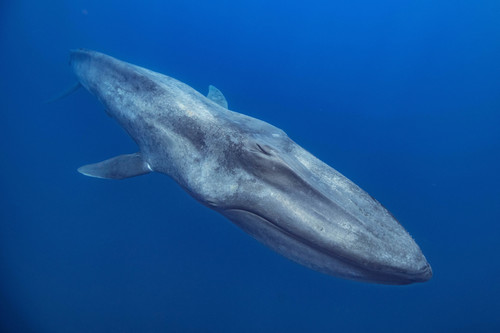
Blue Whale
The majestic blue whale, Balaenoptera musculus, commands the oceans with its immense size and deep calls. Known for its striking blue-gray hue, this gentle giant thrives on krill, playing a pivotal role in ocean ecosystems. Witnessing its grandeur is a true testament to nature's wonders.
80-90 years
Lifespan
99790.32 - 159663.17 kg
Weight
Length: 25.0 - 30.0 m
Size
Grey, Blue, Black, White
Color
10-15 years
Age of Sexual Maturity
8 months
Age of Weaning
13 mph
Top Speed
Endangered
Conservation Status
Increasing
Population Trend
Characteristics
The blue whale, Balaenoptera musculus, is the largest animal known to have ever existed. It inhabits all major oceans, often found in deep offshore waters. Blue whales feed primarily on krill and are known for their deep, resonant calls. They have a distinct mottled blue-gray coloration and can grow up to 100 feet in length.
Distribution Range of the Blue Whale
The blue whale (Balaenoptera musculus) is found in all the world's oceans, except for the Arctic. Its geographical distribution includes the North Atlantic, North Pacific, Southern Ocean surrounding Antarctica, and the Indian Ocean. Notably, they inhabit regions ranging from temperate to polar waters.
Blue Whale's Habitat
Environmental Conditions
Blue whales typically inhabit open ocean environments where they can find abundant krill, their primary food source. They are usually found in deep, offshore waters rather than coastal regions. The environmental conditions they prefer include cool to temperate waters, although they migrate to warmer tropical waters for breeding during certain seasons.
Ecological Niche
As the largest animals on Earth, blue whales play a crucial role in the marine ecosystem. They primarily feed on small shrimp-like animals called krill and can consume several tons per day. Blue whales are filter feeders and use baleen plates to strain food from the water. Their presence influences the population dynamics of krill and other small marine organisms, and their nutrient-rich fecal matter supports the growth of phytoplankton, contributing to the ocean's carbon cycle.
Copyright @ Nature Style Limited. All Rights Reserved.
 English
English